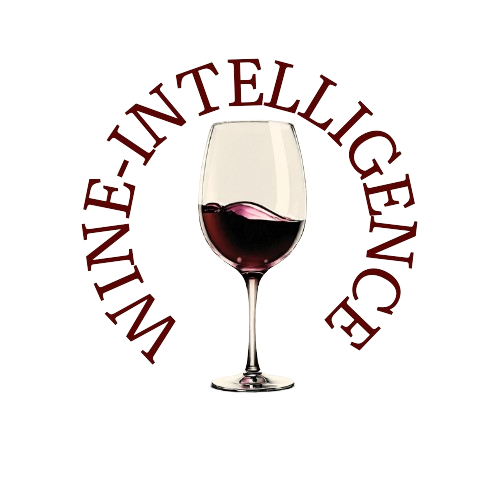In August 2025, Italy’s wine market in large-scale retail (GDO) reached EUR 3.1 billion, marking a slight increase in value (+0.6%) but a drop in volume (–1.8%) compared to the previous year.
This performance reflects a market in transition—one where consumers, faced with inflation and lifestyle changes, are drinking less but choosing better.
Southern Italy Leads the Growth
Among all regions, Southern Italy stands out as the most dynamic, posting a +5.3% rise in value and nearly stable volumes. This highlights the strength of local appellations and regional loyalty, even amid a broader national slowdown in wine volumes.
According to NielsenIQ, which conducted the research presented at Milan Wine Week 2025 during “Carrefour Day,” Italy remains resilient thanks to its capacity to innovate and premiumize.
The Horeca Challenge: Fewer Outings, Higher Expectations
While the retail market adapts to new consumption patterns, the HoReCa (hotel, restaurant, catering) sector faces a complex scenario. 19% of Italians surveyed said they plan to reduce their outings in 2026 to cope with the rising cost of living. Yet, this does not imply a retreat from quality—66% declared they will focus on fewer but higher-value experiences, showing a clear shift toward premium consumption.
As Federico Gordini, president of Milano Wine Week, noted, “Young families today represent the fastest-growing segment in both numbers and consumption, showing a marked tendency toward premium purchases.” This signals a profound generational change in Italy’s wine culture: Millennials and young families are drinking less but spending more per bottle, favoring wines with identity and craftsmanship.
The Pulse of Retail: 21.8 Million Wine-Buying Families
NielsenIQ’s data reveal that 21.8 million Italian households, or 84.6% of the population, buy wine or sparkling wine from supermarkets and hypermarkets. On average, this equals nearly two bottles per month, with an annual expenditure of EUR 137 per household.
Lorenzo Cafissi, Head of Beverage at Carrefour Italia, commented:
“Today’s wine is not only a matter of consumption, but also of culture and responsibility. Bringing excellent wines to the shelves means telling their stories and making them accessible to all.”
Demographically, the largest consumer group consists of households headed by someone aged 55 or older, without children and with above-average income (29.7% of total buyers). However, the fastest-growing segment is made up of younger families with children and below-average incomes—a profile increasingly interested in premium and sustainable products.
Sparkling Wines Keep Shining
The bright spot of the retail sector remains sparkling wine, which recorded EUR 784 million in sales, up +1% in value and +2.2% in volume. This confirms the segment’s vitality and growing appeal among younger consumers.
Still wines, by contrast, show contraction: the EUR 2.3 billion they generated last year is split roughly in half between PDO and PGI wines. PDO wines declined –3.4% in volume but remained stable in value, while PGI wines saw a –1.7% drop in volume yet grew +1.2% in value—a clear reflection of the market’s “less but better” direction.
Wine and the Out-of-Home Experience
Beyond retail, the out-of-home wine economy remains vital, sustained by 438,000 active businesses, including 176,000 restaurants and 150,000 bars across Italy. In the last quarter, nine out of ten Italians have dined or drunk out at least once—more than in Germany or Spain.
Still, six out of ten feel financially vulnerable, and restaurant visits are among the first expenditures to be reduced. This tension between inflation and lifestyle is shaping a more selective consumer mindset: Italians are cutting frequency, not quality. Wine remains central—two out of five Italians choose wine as their drink of preference when they go out.
NielsenIQ also highlights changing generational dynamics:
- Gen X (44–55) remains the core buying power, deeply attached to wine culture.
- Gen Z (18–27) is active in social and nightlife venues but tends to favor cocktails and beer.
-
Women aged 35–54 show the highest affinity toward wine consumption.
Meanwhile, the No- and Low-Alcohol category, though niche, continues to expand, with double-digit growth—especially in sparkling versions.
Italy’s Global Role: From the US to Emerging Markets
Internationally, Italy remains a powerhouse. The global beverage market reached USD 940 billion by March 2025 (+4%), and Italy is the leading foreign supplier in the US and the world leader in sparkling wines, holding over 40% of global market share.
Despite trade uncertainty and tariffs, Italian wine sales in US retail remain stable in both price and volume. Globally, growth now depends not on volume expansion, but on value creation, diversification, and digitalization.
NielsenIQ points to Latin America and China as the next frontiers:
- In Brazil, worth USD 2.3 billion, wine consumption is rising, and the country leads with 44% of volume and value in the region.
- Mexico shows the highest average wine price in Latin America (over EUR 10 per liter).
- Argentina stands out for strong value growth driven by higher prices.
- In China, over 7 million consumption points exist, and 87% of consumers go to restaurants or bars weekly—a +27% increase compared to the global average.
These figures confirm the enormous potential of emerging markets for Italian producers, especially as they combine heritage with digital innovation and strategic positioning.
A Market in Transformation
The 2025 NielsenIQ report paints a clear picture: Italy’s wine sector is evolving from a volume-driven market to one centered on value, experience, and identity. Consumers are becoming more selective, sustainability is gaining weight, and premiumization is the new normal.
Even in challenging times, wine remains at the heart of Italy’s cultural and social life—an expression of quality that Italians continue to seek, whether at home, in restaurants, or abroad.
Source: WineNews

